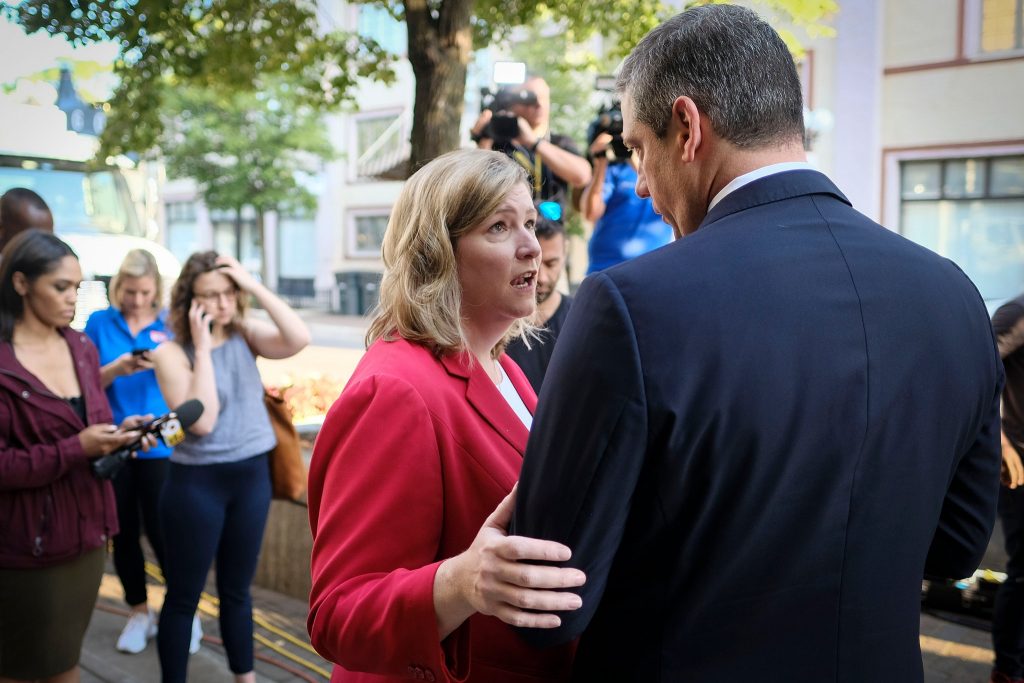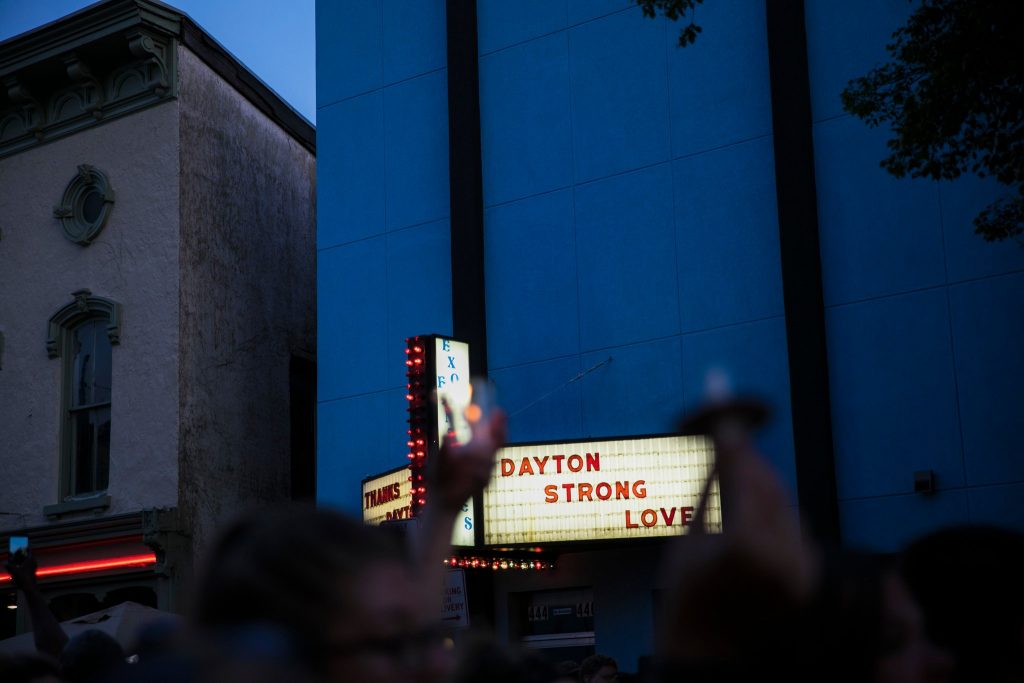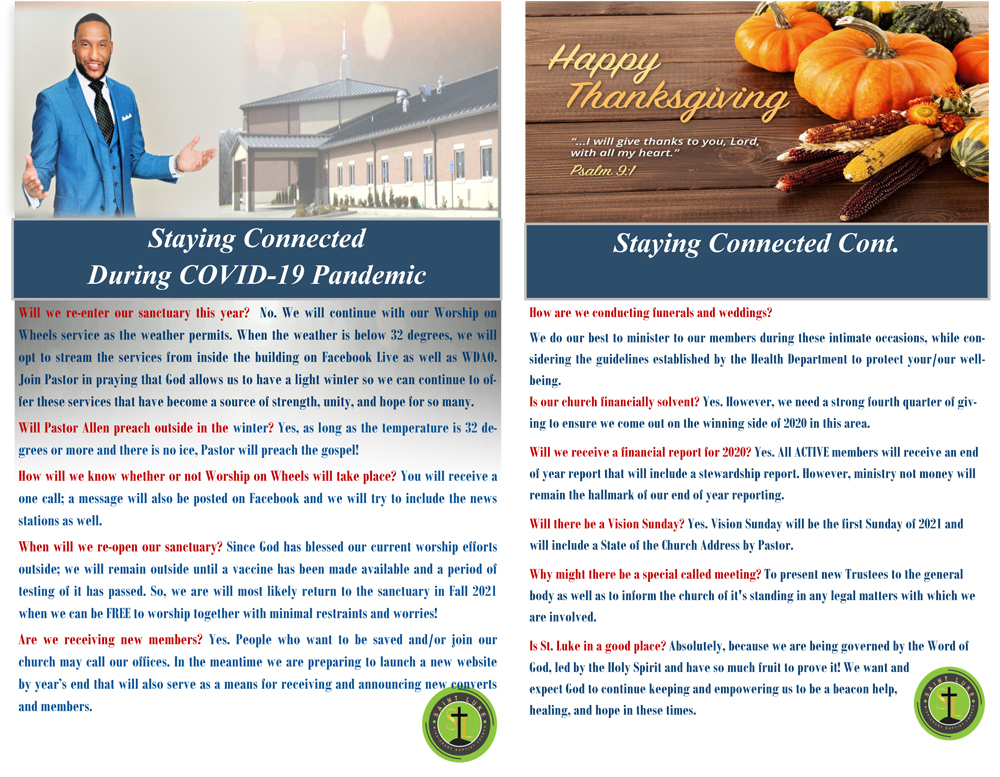‘Something Just Keeps Happening’: Dayton Shooting Hit a City Already in Pain

DAYTON, Ohio — First, the Ku Klux Klan came to town. Two days later, tornadoes destroyed hundreds of homes and businesses and obliterated entire neighborhoods in and around the western Ohio city of Dayton.
Then this past weekend, a gunman stormed onto a crowded sidewalk in the entertainment district — an area of town typically swarming with revelers who stay until the bars close in the early morning — and fired at least 41 shots into the crowd, killing nine people before he was shot dead by the authorities.
“Something just keeps happening,” said Amanda Hensler, an owner of a store, Heart Mercantile, that is across the street from where the massacre took place.
The day after the mass shooting — the second within a 13-hour period in America — residents flocked to Ms. Hensler’s store to buy T-shirts that read “Dayton Strong,” which has become something of a motto for this grieving, shocked city. The customers knew that the store would have them in stock because they had been printed three months earlier, after the catastrophic tornado outbreak.
Indeed, Dayton has been through a brutal six-month stretch, even before the Klan held a rally at the city’s downtown Courthouse Square. Since the beginning of February, the city has also endured a large infrastructure failure and federal indictments at City Hall.

Seeing the city through all this has been Mayor Nan Whaley, 43, a blunt and outspoken second-term Democrat who is believed to have political ambitions beyond Dayton, a city with about 140,000 residents who have endured more trauma this year than many larger cities experience in a decade.
Since Sunday morning, when she first appeared before a throng of reporters, Ms. Whaley has found herself in the biggest moment of her political life — and at the worst moment of her city’s modern history. She has been a whirlwind presence across the city, too, talking to victims’ families, briefing reporters and working with the state’s Republican governor to form bipartisan alliances on gun policy.
And then there is the Twitter feud with the president of the United States.
“She’s going to be governor one day,” said Senator Sherrod Brown, a fellow Democrat who represents Ohio. Mr. Brown was not speaking of Ms. Whaley’s presence solely over the past few days, but over the whole, bad year.
“There have been these three big things, two of them tragic,” he said, “and then you put all that in the context of the past 30 years, with globalization. It’s sort of been one thing after another.”
In February — after a water line break left tens of thousands without water, but before the federal indictments of current and former local officials — Montgomery County granted the Klan a permit to come to town on the last weekend in May. Afterward, the city sued, arguing that a paramilitary-style rally would present serious public safety concerns. Officials ultimately agreed to a consent decree that limited the weapons the marchers could carry.
The rally cost the city at least $600,000 in security costs, but in the end, only nine Klansmen showed up. They were hemmed in by more than 700 law enforcement officers and were easily drowned out by the shouts and chants of the hundreds who had come out to oppose the march. When the rally ended uneventfully, it seemed that the potential for serious violence had passed.
Two days later, the tornadoes hit.
“It was almost as if it was a metaphor of a divine nature,” said the Rev. Renard Allen Jr., the pastor of St. Luke Missionary Baptist Church, one of the larger churches in Dayton.
Church Location
2262 N. Gettysburg Avenue Dayton, OH 45406
Service Times
Worship Service – Sundays – 10:45 am
Bible Study – Wednesdays – 12 Noon & 6:30 pm




